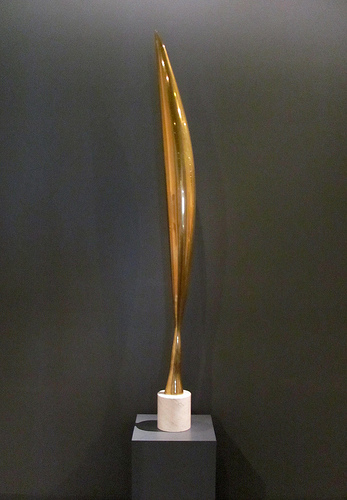Artists sometimes repeat motifs in their work over the course of their career. Constantin Brancusi, the Romanian sculptor working in the early twentieth century, reworked a bird motif many times from the 1920s through the 1940s in an effort to arrive at an elemental form–the ultimate motif–of a bird in flight so that it would embody, as the artist put it, “the essence of flight.”
The bird is from a Romanian folk legend entitled, “Pasarea Maiastra,” about a magical bird whose singing had supernatural powers. According the Romanian fauna mythology, the bird was the queen of birds and messenger of the fairies. She had a beautiful voice that only the chosen could hear and her voice had the potential to make the listener younger. The artist represented this bird sixteen times in his career.
There are no feathers on the sculpture, nor are there wings; yet, the sculpture is easily identifiable as a bird flying because of the conical footing, the swelling form of the body, and the slanted oval that conveys the head and beak.
More sculptures by Constantin Brancusi
[nggallery id=28]
Recommended Reading


